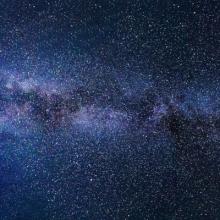
Galactic dynamics involves the use of computer simulations of the formation and interaction of galaxies to examine how this affects the evolution and eventual structure of galaxies. For example, by performing a very long time scale computer simulation of galaxies merging we can compare this with observational data and obtain a better understanding of how star formation is influenced by merger events. Galactic evolution takes place over truly astronomical length and time scales so this sort of computer modelling is the only way to effectively study these processes, which have a major impact on why the galaxies we see in the sky look the way they do — and ultimately why star and planet formation proceeds the way it does.
Here at the CCRG we focus on two main strands of work. The first is performing these calculations themselves — including some of the first magnetohydrodynamic simulations of interactions. Secondly, we also look at other calculations, since a simulation of the formation of many thousands of galaxies is very computational expensive and challenging operation. In both cases we then analyse the resulting simulation data to draw conclusions, for example the distribution of fluid in galactic structures or the shape and nature of magnetic fields after two galaxies have interacted. Finally, we then compare these conclusions to observations which allows us both to fill in blanks caused by the limits of our simulations but also answer questions posed by the sometimes limited nature of observational data. And sometimes it poses new questions!